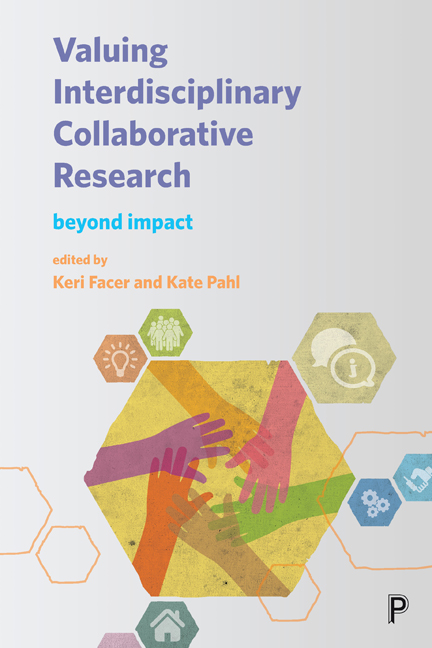Six - What is the role of artists in interdisciplinary collaborative projects with universities and communities?
Published online by Cambridge University Press: 05 April 2022
Summary
Introduction
In this chapter we provide a way of thinking about the impact of artists working collaboratively in order to co-produce ideas with a range of people, including people working in universities. The drive to make art with communities in order to effect change and support community activism has had a long history both in the UK and globally (Kester, 2005; Bishop, 2012). As projects have become more interdisciplinary and collaborative, contemporary artists have been increasingly visible working with academics from a variety of disciplines, including Social Science, Pure Science, and the Arts and Humanities. Artists work within contexts such as schools and hospitals, and when doing so, can challenge conventional practices. This includes ‘artist in residence’ programmes, where artists respond to place, site and people. In the 1960s Barbara Steveni, John Latham and others initiated the radical and influential ‘Artists Placement Group’, based in the UK but with European links, which situated artists within unfamiliar spaces including factories, places of work and businesses (Slater, 2000). They argued that coming from the ‘outside’, an artist might unsettle or question ways of doing things in a setting, create a space for a different kind of practice to take shape, or open up new pathways for thinking. Other partnerships, for example between artists and teachers, created new configurations of practice, enabling them to work together in new and unexpected ways. Often artists’ approaches will be different from established norms, creating an unexpected experience for all collaborators. For example, in a school, an artist might suggest stretching time to work on children's messy play longer, while teachers are more likely to remain within the timetable structure. Artists’ interventions can change the way people do things that might not have been considered previously. In a hospital, aesthetic considerations suggested by an artist can change how light and space are deployed in a waiting room, altering how people feel in the space. On a council estate, sculpture provides a focal point, or a one-off event might create a new configuration of how space is used and appreciated by those who live there. While the impact of artists working in such contexts may be recognised, what happens in the fine detail of these encounters is not always clear.
Information
- Type
- Chapter
- Information
- Valuing Interdisciplinary Collaborative ResearchBeyond Impact, pp. 131 - 152Publisher: Bristol University PressPrint publication year: 2017
